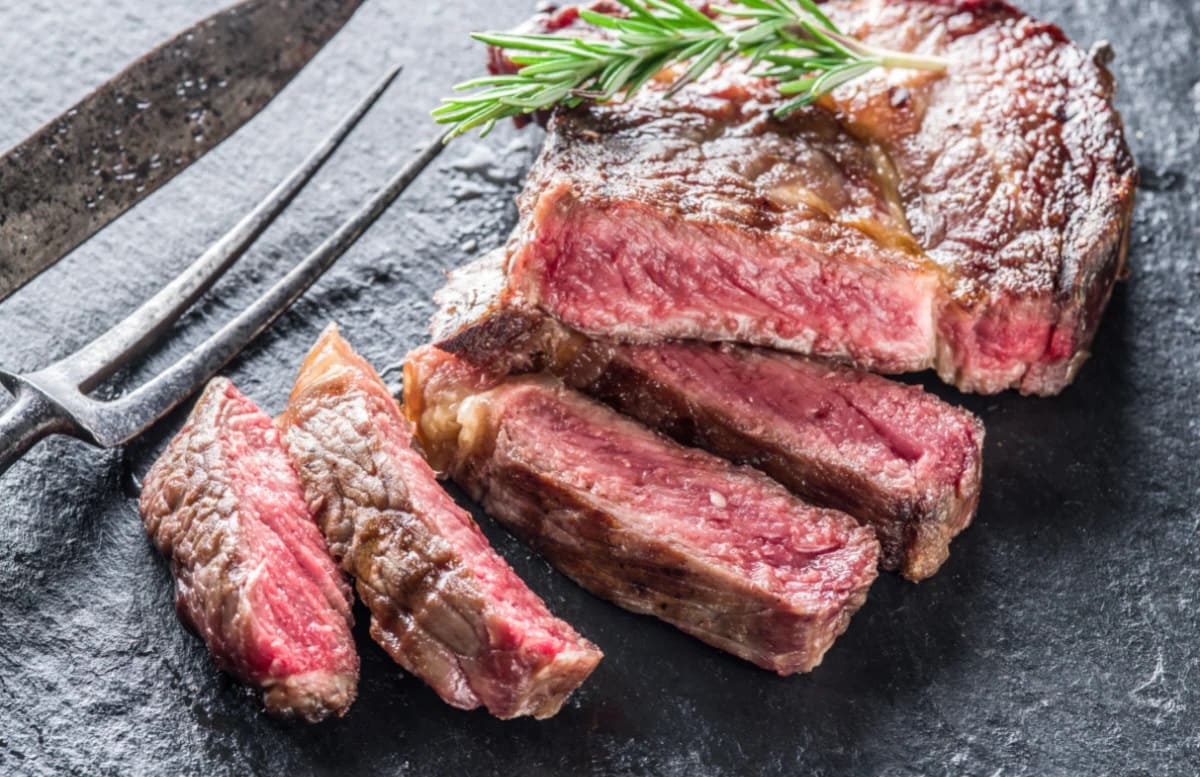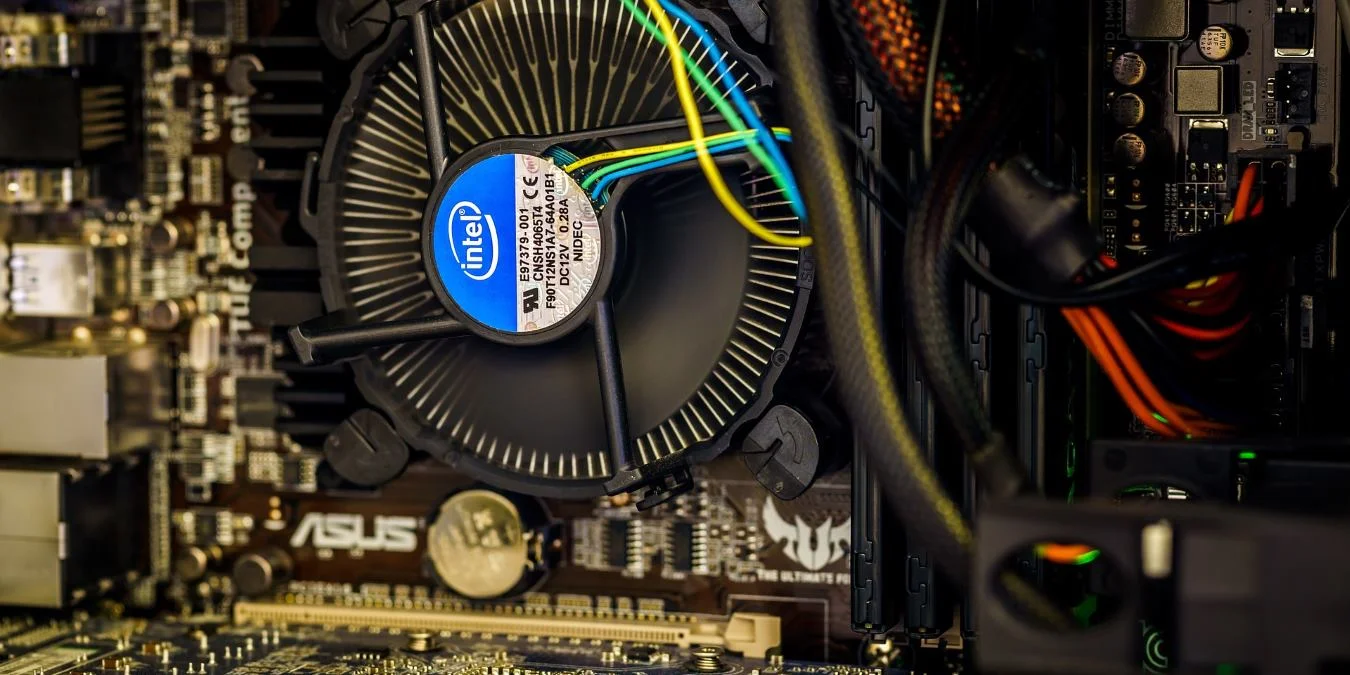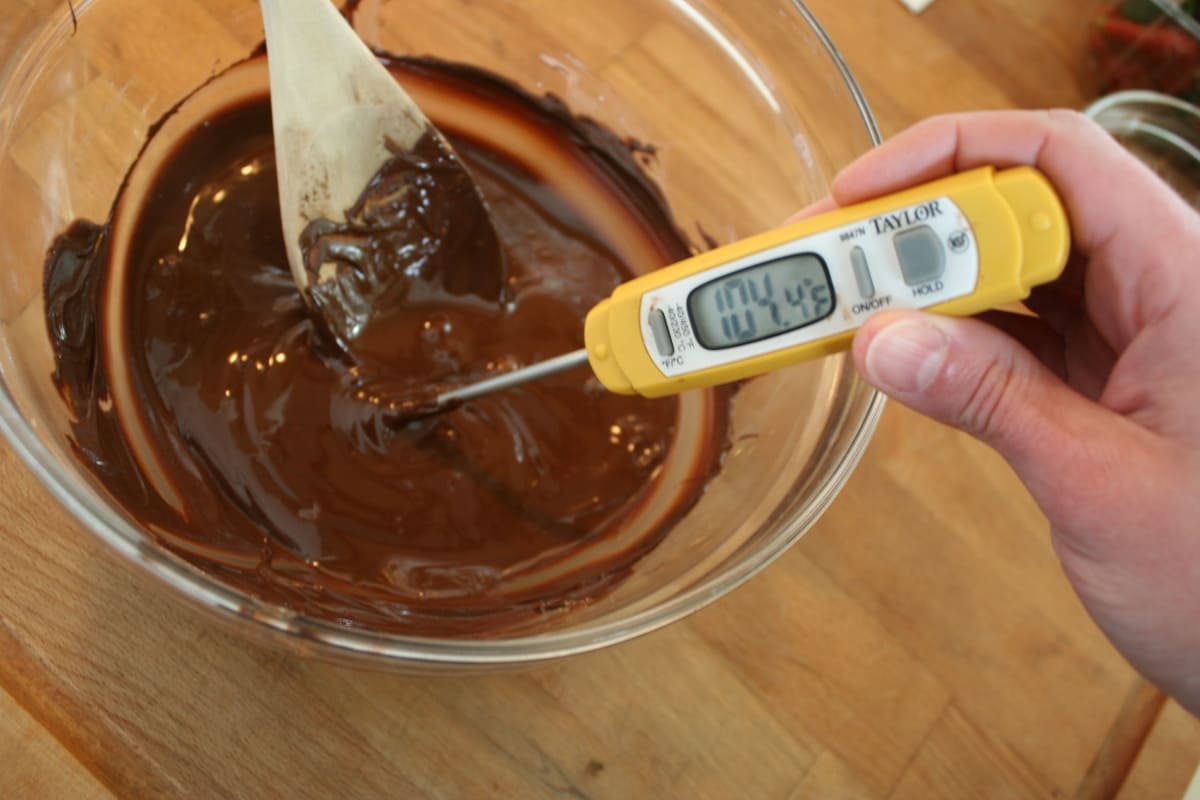Home>Culinary & Beverages>Minimum Temperature For Cooling And Reheating Cooked Food


Culinary & Beverages
Minimum Temperature For Cooling And Reheating Cooked Food
Published: February 21, 2024
Discover the ideal minimum temperature for safely cooling and reheating cooked food with our expert culinary and beverages guide. Keep your meals fresh and delicious!
(Many of the links in this article redirect to a specific reviewed product. Your purchase of these products through affiliate links helps to generate commission for Temperatures.com, at no extra cost. Learn more)
Table of Contents
Importance of Maintaining Proper Temperature for Cooked Food
Maintaining proper temperatures for cooked food is crucial to ensure food safety and prevent the growth of harmful bacteria. When cooked food is left at unsafe temperatures, bacteria can multiply rapidly, leading to foodborne illnesses. Therefore, it is essential to adhere to specific temperature guidelines for both cooling and reheating cooked food.
Improperly cooled food can be a breeding ground for bacteria, especially when it remains in the "danger zone" of 40°F to 140°F (4°C to 60°C) for an extended period. To prevent this, it is recommended to cool cooked food rapidly to below 40°F (4°C) within two hours of cooking. This can be achieved by using shallow containers, dividing large portions into smaller ones, and placing them in the refrigerator or using ice baths.
When it comes to reheating cooked food, the minimum temperature is equally critical. Foods should be reheated to a minimum internal temperature of 165°F (74°C) to destroy any bacteria that may have developed during the cooling process. This temperature ensures that the food is safe for consumption and reduces the risk of foodborne illnesses.
By understanding the importance of maintaining proper temperatures for cooked food, individuals can play a significant role in safeguarding public health. Whether in a professional kitchen or at home, following these temperature guidelines is essential for preventing foodborne illnesses and ensuring the safety of consumers.
Guidelines for Cooling Cooked Food
Properly cooling cooked food is a critical aspect of food safety, as it helps prevent the growth of harmful bacteria and ensures that the food remains safe for consumption. To achieve this, it is essential to adhere to specific guidelines for cooling cooked food effectively.
Rapid Cooling Methods
One of the key principles for cooling cooked food is to do so rapidly. This involves reducing the temperature of the food from the cooking temperature to below 40°F (4°C) within a short timeframe, typically within two hours. Rapid cooling inhibits the proliferation of bacteria, minimizing the risk of foodborne illnesses. To achieve rapid cooling, several methods can be employed, including the use of shallow containers, dividing large portions into smaller ones, and utilizing ice baths or ice wands. These methods increase the surface area of the food, allowing heat to dissipate more quickly and facilitating faster cooling.
Shallow Containers
Utilizing shallow containers for storing cooked food promotes efficient cooling. By spreading the food out in a thin layer, heat is released more effectively, accelerating the cooling process. This method is particularly effective for soups, stews, and other liquid-based dishes. Additionally, using shallow containers reduces the likelihood of the food remaining in the temperature danger zone for an extended period, mitigating the risk of bacterial growth.
Dividing Large Portions
When dealing with large portions of cooked food, it is advisable to divide them into smaller portions before cooling. This not only aids in rapid cooling but also ensures that the food cools uniformly throughout. By reducing the volume of each portion, heat is dissipated more efficiently, expediting the cooling process and minimizing the time spent in the temperature danger zone.
Ice Baths
Another effective method for rapidly cooling cooked food is the use of ice baths. This involves placing the containers of hot food in a larger container filled with ice and water. The thermal conductivity of the ice facilitates the transfer of heat away from the food, accelerating the cooling process. Ice baths are particularly useful for items such as sauces, gravies, and custards, where using shallow containers may not be practical.
By adhering to these guidelines for cooling cooked food, individuals can significantly reduce the risk of foodborne illnesses and ensure the safety of the food they prepare. Implementing rapid cooling methods, utilizing shallow containers, dividing large portions, and employing ice baths are essential practices for maintaining food safety and upholding high standards of culinary hygiene.
Factors Affecting Minimum Temperature for Reheating Cooked Food
Several factors influence the minimum temperature required for reheating cooked food to ensure its safety and quality. Understanding these factors is essential for maintaining food hygiene standards and preventing the risk of foodborne illnesses.
Type of Food
Different types of food have varying densities and moisture content, which can impact the minimum reheating temperature. For example, dense foods such as meats and casseroles require thorough reheating to ensure that the internal temperature reaches the recommended level for destroying bacteria. On the other hand, foods with higher moisture content, such as soups and sauces, may require less time to reach the minimum temperature due to their ability to conduct heat more effectively.
Initial Cooking Method
The initial cooking method used for preparing the food can also influence the minimum reheating temperature. Foods that were cooked using lower temperatures or methods that may not have uniformly distributed heat, such as slow cooking or sous vide, may require more careful reheating to ensure that all parts of the food reach the recommended temperature. Additionally, foods that were partially cooked or par-cooked before being stored for reheating may require higher temperatures to eliminate any bacteria that may have developed during the initial cooking and cooling processes.
Read more: Guide To Safe Meat Cooking Temperatures
Storage Conditions
The conditions under which the cooked food was stored prior to reheating can impact the minimum temperature required for safe reheating. If the food was stored at temperatures higher than recommended or for an extended period, there is a higher likelihood of bacterial growth. In such cases, reheating the food to the recommended minimum temperature becomes crucial to eliminate any bacteria that may have proliferated during storage.
Size and Thickness of Food Portions
The size and thickness of food portions play a significant role in determining the minimum reheating temperature. Larger or thicker portions of food require more time to reach the recommended internal temperature, as heat penetration may be slower in these instances. It is essential to ensure that all parts of the food, especially the thickest areas, reach the minimum temperature to guarantee its safety.
Equipment and Reheating Method
The equipment and method used for reheating cooked food can impact the minimum temperature required for safe consumption. Microwave reheating, conventional oven reheating, and stovetop reheating may require different durations and temperatures to achieve the recommended internal temperature. Additionally, the use of proper reheating equipment, such as food thermometers, is essential for accurately monitoring the internal temperature of the food during the reheating process.
By considering these factors, individuals and food service establishments can ensure that cooked food is reheated to the appropriate minimum temperature, thereby minimizing the risk of foodborne illnesses and upholding food safety standards. Adhering to recommended reheating temperatures is crucial for safeguarding consumer health and maintaining the quality of prepared food.
Best Practices for Reheating Cooked Food
When it comes to reheating cooked food, following best practices is essential to ensure food safety and maintain the quality of the prepared dishes. Adhering to recommended guidelines and employing effective reheating methods can significantly reduce the risk of foodborne illnesses and uphold high standards of culinary hygiene.
One of the fundamental best practices for reheating cooked food is to use a food thermometer to accurately monitor the internal temperature of the food. This allows individuals to ensure that the food reaches the minimum recommended temperature of 165°F (74°C) throughout, effectively eliminating any potential bacteria that may have developed during the cooling and storage processes. By verifying the internal temperature, individuals can have confidence in the safety of the reheated food, providing peace of mind to both the preparer and the consumer.
Another crucial best practice is to reheat food evenly to guarantee uniform heat distribution. Uneven reheating can result in certain parts of the food remaining at unsafe temperatures, creating potential hot spots where bacteria can thrive. To achieve uniform reheating, stirring the food midway through the reheating process or using microwave-safe covers to promote even heat distribution is recommended. This practice ensures that all portions of the food reach the minimum temperature, minimizing the risk of bacterial survival.
Furthermore, when reheating multiple dishes, it is important to avoid cross-contamination. This can be achieved by using separate containers or designated areas in the reheating equipment for each dish. Preventing the mixing of different foods during the reheating process helps maintain the integrity of each dish and reduces the risk of cross-contamination, which can lead to foodborne illnesses.
Additionally, covering the food during the reheating process can help retain moisture and prevent the food from drying out. This is particularly important for items such as meats, casseroles, and baked goods, as it helps preserve their texture and flavor. By covering the food with a lid, microwave-safe cover, or foil (with proper venting), individuals can ensure that the reheated food remains palatable and enjoyable.
Lastly, it is essential to avoid prolonged or multiple reheating cycles, as this can compromise the quality and safety of the food. Reheating food multiple times or for extended periods can lead to overcooking, loss of moisture, and potential nutrient degradation. Therefore, reheating only the amount of food that will be consumed and avoiding excessive reheating cycles is a key best practice for maintaining the quality and safety of reheated dishes.
By incorporating these best practices into the reheating process, individuals and food service establishments can uphold food safety standards, minimize the risk of foodborne illnesses, and ensure that reheated food maintains its quality and flavor. Adhering to these guidelines demonstrates a commitment to culinary excellence and consumer well-being, making it an integral part of responsible food preparation and service.
Monitoring and Controlling Temperature for Cooked Food
Monitoring and controlling the temperature of cooked food is a critical aspect of ensuring food safety and preventing the proliferation of harmful bacteria. By implementing robust temperature monitoring and control measures, individuals and food service establishments can uphold high standards of culinary hygiene and safeguard consumer health.
One of the primary methods for monitoring the temperature of cooked food is through the use of food thermometers. Digital or analog food thermometers provide accurate readings of the internal temperature of the food, allowing individuals to verify that it has reached the recommended minimum temperature for both cooling and reheating. Regular calibration and maintenance of food thermometers are essential to ensure their accuracy and reliability, thereby enabling precise temperature monitoring.
In addition to using food thermometers, maintaining proper refrigeration and storage temperatures is crucial for controlling the safety of cooked food. Refrigerators and cold storage units should be set to maintain a temperature of 40°F (4°C) or below to inhibit the growth of bacteria in cooked food. Regular monitoring of refrigerator temperatures and prompt maintenance of any malfunctions or deviations from the recommended temperature range is imperative to prevent the spoilage of cooked dishes.
Furthermore, implementing temperature control measures during the cooling and reheating processes is essential for maintaining food safety. Rapid cooling methods, such as utilizing shallow containers, dividing large portions, and employing ice baths, facilitate the swift reduction of the food's temperature, minimizing the time spent in the temperature danger zone. Similarly, adhering to the recommended minimum reheating temperature of 165°F (74°C) ensures the destruction of any bacteria that may have developed during the cooling process, thereby guaranteeing the safety of the reheated food.
Regular temperature monitoring and documentation are essential components of a comprehensive food safety management system. Establishing temperature monitoring logs and records enables individuals and food service establishments to track the temperature history of cooked food, identify any deviations from recommended temperature ranges, and take corrective actions promptly. This proactive approach to temperature monitoring and control demonstrates a commitment to food safety and consumer well-being.
By prioritizing the monitoring and control of temperatures for cooked food, individuals and food service professionals can mitigate the risk of foodborne illnesses, uphold food safety standards, and instill confidence in the quality and safety of the prepared dishes. Implementing rigorous temperature monitoring and control measures is a fundamental aspect of responsible food preparation and service, underscoring the dedication to maintaining the integrity and safety of culinary offerings.












